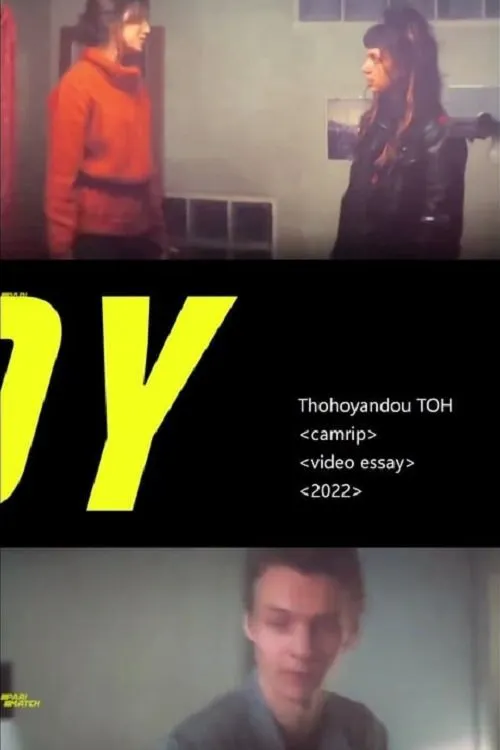camrip

Plot
In "Camrip," Thohoyandou Toh, a talented Macau indie-film maker, embarks on a thought-provoking journey to delve into the enigmatic world of camrips. This non-traditional film serves as a video essay, where Toh shares his personal experiences and unique insights regarding camrips, shedding light on the multifaceted meanings behind these seemingly insignificant video files. Through a masterful blend of introspection, research, and analysis, Toh unravels the complex web of camrip's existence in the realms of film propaganda, capital circulation, network circulation, and version comparison. The film begins with Toh's nostalgic reminiscence of his early days as a film enthusiast. During this period, he was involved in running private torrent servers that catered to movie lovers, providing access to a wide range of films. As part of his role, Toh saved camrips, which are low-quality video recordings of movies, typically recorded from movie theater screens. These camrips were often dismissed as inferior and unwanted by the general public, but Toh saw them as a treasure trove of hidden meanings and stories waiting to be unraveled. Toh's fascination with camrips stems from his interest in exploring the nuances of film propaganda. He argues that camrips can serve as a reflection of the societal attitudes and values that shape the way we consume and interact with movies. By examining camrips as a window into the cultural consciousness, Toh reveals how these low-quality recordings can sometimes provide a more authentic representation of a film's impact and influence on the audience. One of the key themes that Toh explores in "Camrip" is the relationship between camrips and capital circulation. He discusses how the distribution and monetization of movies often rely on a complex network of power dynamics, where the value of a film is determined by its perceived worth to the market. Toh suggests that camrips can be seen as a form of counter-narrative to the traditional Hollywood model, where the focus is on the commercial success and profits rather than artistic merit. Moreover, Toh delves into the world of network circulation, examining how camrips are disseminated and shared across the globe through online platforms. He highlights the role of fansubbing, a grassroots movement where enthusiasts create and distribute their own subtitles for films and TV shows. Through this lens, Toh demonstrates how camrips can serve as a catalyst for community building and cultural exchange, bridging geographical and linguistic divides. The film also touches on the topic of version comparison, where Toh investigates the various differences between camrips and their official counterparts. He notes that these discrepancies often reveal the inherent contradictions and biases within the film industry, particularly with regards to the treatment of different cultures and languages. By juxtaposing camrips and official versions, Toh shows how the former can expose the power dynamics at play, shedding light on the often-overlooked aspects of film production and distribution. Throughout "Camrip," Toh's introspection and analytical skills are evident as he expertly navigates the complex web of themes and ideas surrounding camrips. The film serves as a testament to the richness and diversity of film as a medium, highlighting the multifaceted meanings that lie beneath the surface of seemingly insignificant video files. By sharing his own experiences and insights, Toh has created a thought-provoking work that will resonate with film enthusiasts, artists, and anyone interested in exploring the intersections of culture, technology, and society. Ultimately, "Camrip" is a film that challenges our assumptions about the value and significance of camrips. Rather than dismissing these low-quality recordings as inferior, Toh encourages us to see them as a reflection of our broader social and cultural context. As we continue to navigate the ever-changing landscape of film and media, "Camrip" serves as a poignant reminder of the power of film to shape our perceptions, challenge our assumptions, and reveal the nuances of the world around us.
Reviews
Recommendations




